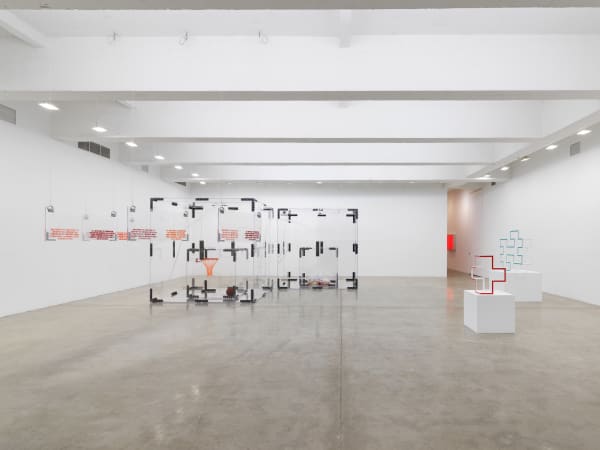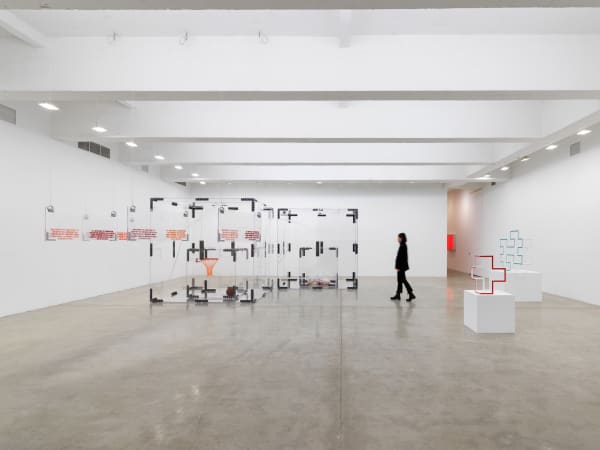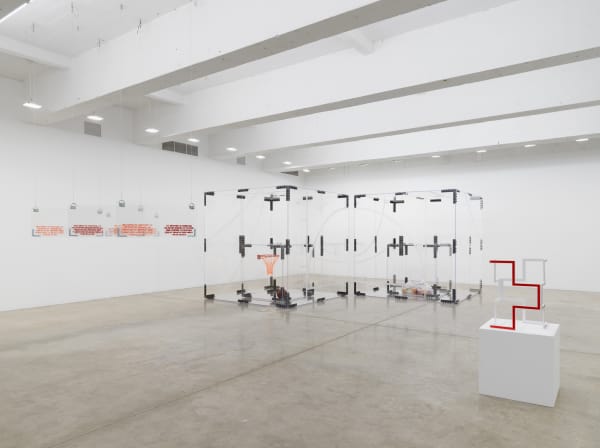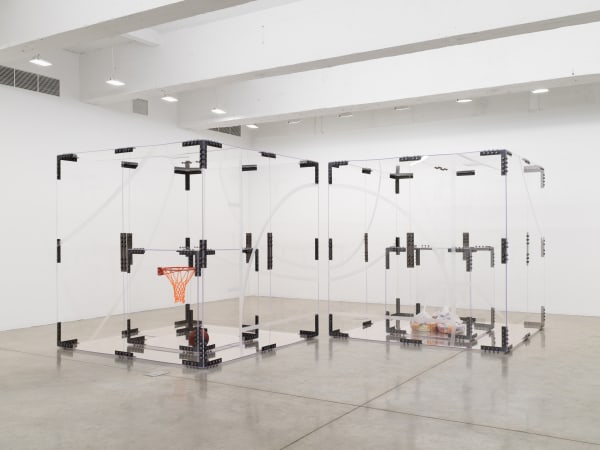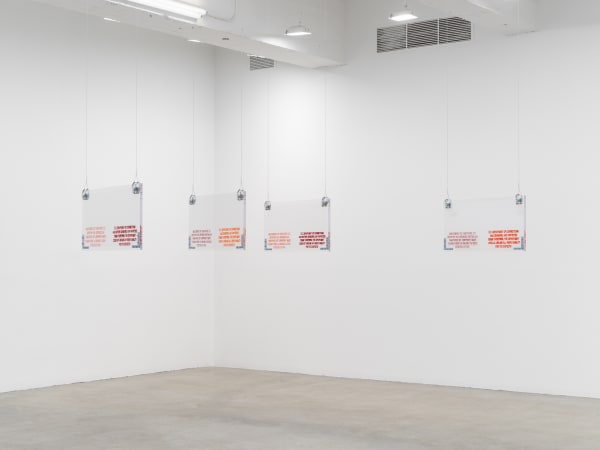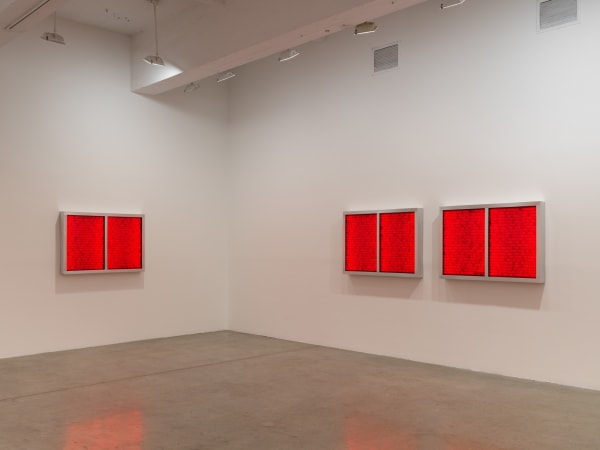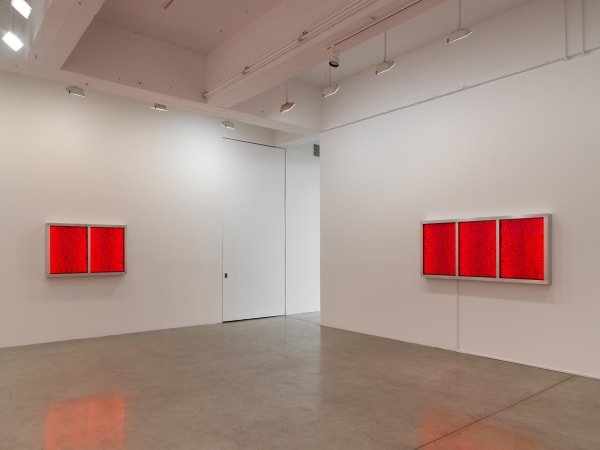Tanya Bonakdar Gallery is pleased to present Hindsight Bias, Sherrill Roland’s first exhibition with the gallery, on view in New York from January 8 through February 5, 2022.
Sherrill Roland’s interdisciplinary practice deals with concepts of innocence, identity, and community, often filtered through minimalist gestures, specific materials, and various layers of abstraction. For more than three years, Roland's right to self-determination was lost to wrongful incarceration. He spent ten months in prison before being exonerated and returning to an artistic practice that developed into a vehicle for expression, reflection, and emotional release.
The title Hindsight Bias references how we process memories using acquired wisdom and knowledge. In his work, Roland examines how his own experience with the American criminal justice system has shaped his worldview and how it has changed since his exoneration. Roland has maintained an extensive archive of letters, books, commissary lists, and other materials which serve as inspiration for four new bodies of work shown here for the first time. In these works, he uses only materials that were available to him while in prison. Incorporating surreal shifts of scale and poetic formal gestures, Roland creates images, objects and environments that illuminate the invisible costs, damages, and burdens of incarceration.
At the entrance of the gallery, four sculptures made of clear acrylic hang from the ceiling. Shaped like large envelopes, Roland has etched the language that the D.C. Department of Corrections stamped onto the mail he sent, stating that the institution takes no responsibility for the contents of the letter. On the rear side of the sculpture, Roland has altered the text to say that the institution should take responsibility for the forms and conditions of the contents, highlighting the inherent paradox of the criminal justice system. The two versions of text are divided by a panel etched with the familiar pattern of the interior of a security envelope, making it impossible to read both texts at the same time. The viewer moves from the original text to the altered text and feels the physical distance between shifting perspectives.
In the main gallery space, two acrylic cubes measuring eight feet by eight feet occupy the center of the room. Titled Home and Away, the work recalls a basketball tournament Roland helped organize within his housing unit in conjunction with “March Madness.” Two internal cubes measuring four feet by four feet are visible inside the larger cubes, along with a basketball rim, ball, and three clear tote bags filled with commissary goods, which were collectively purchased as prizes for the winners. Roland uses the same architectural design of the prison to orient the cubes, with the only entrance positioned at the corner, allowing the correctional officers to surveil the entire space at all times and to limit access when necessary. The internal cubes suggest containment and exposure.
In three minimal white steel sculptures that surround the basketball cubes, Roland recalls the modular architectural components of his two-man cell, as well as the experience of spending day after day in it. By tracing the outlines of the white cinder blocks, Roland would pass the time with this repetitive, tactile action that became a form of meditation offering a mental escape to the freedom beyond the physical confines of the prison cell. He recreates the idea of the space between cinder blocks by filling the steel channels with acrylic medium mixed with Kool-Aid, a beverage accessible through commissary in prison. This colorful, sweet drink brought back memories of Roland’s childhood when it was served at family gatherings to kids, a time of innocence which he often reflected upon during these moments of meditative escape.
In the rear gallery, five lightbox sculptures are on view. Roland has extracted and abstracted text from letters he wrote to the mother of his daughter who was born while he was incarcerated. Drawing from this vast correspondence, he layers word upon word to render them illegible, effectively protecting the vulnerability expressed in these letters. The soft red glow and font recalls the typeface of a digital clock. While there were no clocks in prison, Roland measured the passage of time with these letters, counting the number of pages he could write during the time he was allowed out of his cell. Filled with longing and warmth, the contents of the letters and memories are simultaneously clear yet blurred with the passage of time.
Born in 1984 in Asheville, North Carolina, Sherrill Roland studied at Skowhegan School of Painting and Sculpture (2018) and earned his MFA and BFA from the University of North Carolina at Greensboro (2017 and 2009). He has had solo exhibitions at the Shirley Fiterman Art Center, Borough of Manhattan Community College, New York (2019); Maria & Alberto de la Cruz Gallery, Georgetown University, Washington, DC (2019); Brooklyn Public Library (Central Library), Brooklyn, NY (2017); Los Angeles Contemporary Exhibitions, Los Angeles (2017): among others. His work has been included in group exhibitions at the San Jose Museum of Art, San Jose, CA (2020); Tufts University Art Galleries, Medford, MA (2020); Addison Gallery of American Art, Andover, MA (2019); CAM Houston, Houston (2018); and Studio Museum in Harlem, New York, NY (2017). Roland is the recipient of the Creative Capital Award (2021); South Arts Southern Grand Prize & State Fellowship (2020); and was an Art for Justice Grantee (2020) in addition to many other awards and recognitions. He has had fellowships and residencies at Fountainhead, Miami; Duke University, Durham, NC; Otis College of Art and Design, Los Angeles, CA; among others. Roland’s work is in the permanent collections of the Studio Museum in Harlem, New York; Fountainhead, Miami; and Harvey B. Gantt Center for African American Arts + Culture, Charlotte, NC. He lives and works in Durham, NC.
All installation images above: Photo by Dan Bradica
